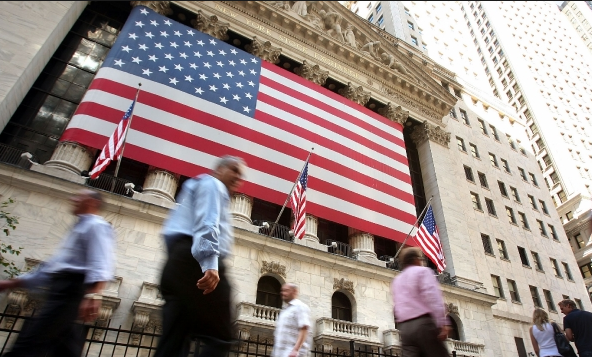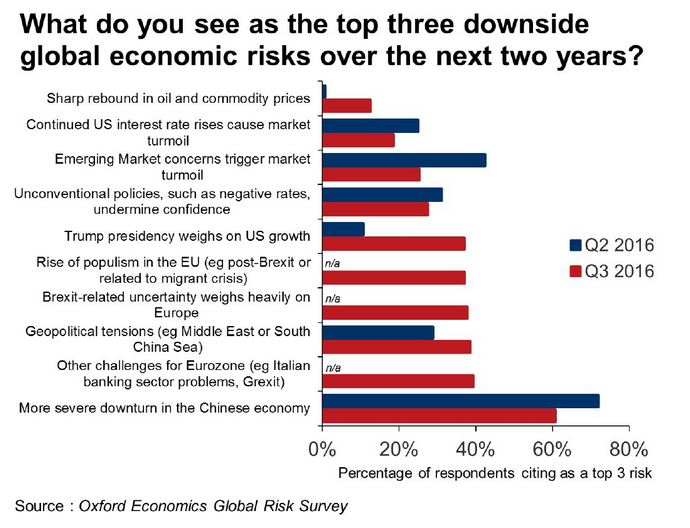
Volatility Persists Despite Promising U.S. Data
For those who trade the foreign exchange, the last few months have been defined by a period of extreme volatility. Many momentous events have occurred, casting their ripples across the investment markets, from Brexit to the highly controversial U.S. presidential election campaign.
As we head towards the end of August, it comes as little surprise to note that this trend towards volatility remains prevalent, and that its continued presence has dominated discussions between those at the Federal Reserve.
It is this talk itself that has, expectedly, most strongly influenced risk trends in the last week, with the American currency continuing to gain against its counterparts.
Here, we explore the latest data indicating conditions within the country, and what this means for investors going forwards…
America’s Economic Outlook
In recent months, investors, commentators, and brokers like ETX Capital have had a whole host of American economic data to work with. A slew of statistics has been released, almost all of them positive, suggesting that the country is in an increasingly strong financial position.
Indeed, last month’s non-farm payrolls noted a figure in excess of 250,000, as well as reporting healthy wage growth.
This information was accompanied by a number of statements made by key Federal officials, whose comments were optimistic. In particular, John Williams, president of its San Francisco arm, helped to stoke dollar bills, when he commented that “it makes sense to get back to a pace of gradual rate increases, preferably sooner rather than later.”
A similarly bullish outlook was adopted by his New York counterpart, William Dudley, whose Thursday speech fed into investor expectations that a rate hike is imminent.
To complete this trinity of positivity, vice chairman Stanley Fischer added on Sunday that the U.S. economy was thriving, and that a hawkish Fed should be expected.

The Janet Yellen Effect
The effect of these comments has been particularly marked due to the poor performances of many of America’s major European counterparts, especially Britain, which has been hard hit by a post-Brexit slump in the value of its currency.
Yet up to this point, it is important to point out that the message from the Fed has remained mixed. Although many officials have sounded optimistic, the future of this central bank is by no means written in stone.
This means that come Friday, when the Fed meets for its yearly policy symposium at Jackson Hole, this current positive outlook could be blown apart. For although a rate hike may undoubtedly be on the cards, chairwoman Janet Yellen has committed to nothing, and the approach she chooses to take remains no more than a point of conjecture.
Even by week’s end, we cannot expect a concrete and unchangeable commitment to any particular stance, for Jackson Hole, although sometimes a backdrop to major economic policy announcements, does not typically play host to such.
What’s more, with many key figures split between dovish and hawkish sentiments, the Fed may not yet be clear which of the two is better for the future of the country, and a commitment one way or the other is not a decision to be taken lightly.
However, the information released so far means that we are not working entirely in the dark. For those who wish to make a move before Jackson Hole, conjecture suggests that Ms Yellen is most likely to concentrate on inflation rates, and that the content of her speech will be both upbeat and hawkish.
The likely result of such an approach is clear: heightened levels of volatility, which will boost the value of the dollar higher still in the weeks to come.
Upcoming Economic Releases
The decisions made at Jackson Hole will not be the only important releases come Friday. A number of other key clues to the future of the U.S. economy will be revealed, including revised second-quarter GDP and consumption statistics.
As it stands, we already have some expected figures to work with: 1.1 per cent for the former, compared to the previous 1.2 per cent; and 4.2 per cent for the latter, the same as previously. These will prove handy for those hoping to jump before they’re pushed, the downside being that they may not be entirely accurate.
The monthly U.S. non-farm payrolls report will also be due within the week, with a release date of September 2nd. Although this is expected to show gains, evidence suggests that these will have slowed to 160,000, far below the 255,000 figure for July.
The Shadow of Brexit
The way that these economic releases will affect the value of the U.S. dollar cannot be assessed by looking at the currency in isolation. One particular point of interest for the savvy trader should therefore be that the British pound is continuing to trade in a lower range.
This trend comes on the back of an apparent rally for sterling earlier in the week, which now appears to have been short-term only. Catalysed by a weakening of the dollar, this seems unlikely to happen again if the optimistic outcome expressed by so many key Federal figures proves correct.
Indeed, although the pound topped out at 1.32 levels when it rallied, it is now expected to fall back to 1.2865 against the dollar, with the psychological after-effects of Brexit unlikely to have passed so quickly.
Going Forwards
Foretelling the future is arguably an investor’s primary trade, yet where the clues are conflicted, as above, it can be incredibly hard to know how to approach a scenario. This is where it pays to build the most comprehensive picture possible, and that’s why each of the pieces of evidence explored here should be taken into account when it’s time to make your next move.
As it stands, the outlook for the dollar seems optimistic, yet the world of currency trading is ever changing, and it’s important never to forget this. Make an educated guess if you choose, yet remember this: patience is a virtue, on the foreign exchange as much as in your everyday life. Keep a weather eye on the markets, see how the tide turns, and use your opportunities wisely.
HedgeThink.com is the fund industry’s leading news, research and analysis source for individual and institutional accredited investors and professionals








